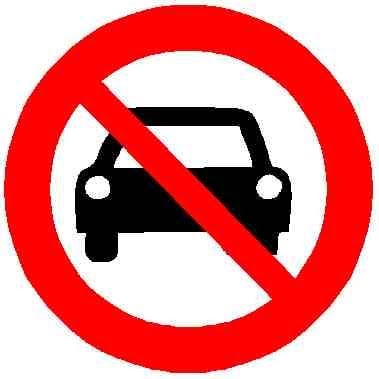What if we handle road safety as general safety?
The hierarchy hazard controls is a de facto standard for determining which measures to take in the presence of risks. The principles can be (and I would argue that they should be) applied to road safety.
From the most effective to the least effective measure, we have:
-
Elimination: Avoid road trips. Of course it is rarely possible.
-
Substitution: Replace dangerous vehicles with non-hazardous vehicles. That is, cars should be limited
-
Engineering controls: people are isolated from risks: cycle paths, sidewalks everywhere, speed bumps, raised crossings, narrowing of the roads
-
Administrative controls: speed limits, 30 km/h cities, speed cameras, training courses.
And last and most definitely least:
- personal protective equipment: they are the least effective, to be used only if there is no possibility of applying other measures: helmets.
Those who push for certain measures do not understand anything about safety, and thus would start from the bottom of the hierarchy.
https://en.wikipedia.org/wiki/Hierarchy_of_hazard_controls
crossposted from: https://mastodon.uno/users/rivoluzioneurbanamobilita/statuses/113978193983638459
Bro, wear hi-viz, you will be ok.
Hardly any biker in the Netherlands wears a helmet, probably more km’s driven by bike per person than any other country. There’s:
- Completely separate infrastructure for bikes
- Physical barriers for cars
- Shared infrastructure where cars can go 10-15 kmh.
VS: SF, which is relatively okay for bikes by US standards (minus those damn hills): Here’s your a green painted area on the road and a helmet, God Speed.
Hardly any biker in the Netherlands wears a helmet
Yes, but:
- Head injuries are extremely common in the Netherlands.
- Since a large number of bike accidents do NOT involve cars, riders should still wear a helmet to keep their brain safe.
With the increase in e-bike use, especially among the older population, injuries in the Netherlands have gone up dramatically, so there’s only so much that infrastructure can do.
We do still need safe cycling infrastructure to separate us from cars as much as possible, but it’s not the panacea that many of us believe it to be.
In a 2023 study in the UK, people were more in favor of public policy to make people safer as long topic was something other than cars.
…adults rated, at random, a set of statements about driving (“People shouldn’t drive in highly populated areas where other people have to breathe in the car fumes”) or a parallel set of statements with keywords changed to shift context (“People shouldn’t smoke in highly populated areas where other people have to breathe in the cigarette fumes”). Such context changes could radically alter responses (75% agreed with “People shouldn’t smoke…” but only 17% agreed with “People shouldn’t drive…”).
https://www.inderscienceonline.com/doi/abs/10.1504/IJENVH.2023.135446>
I am very familiar with this Heriarchy of Controls for my work designing the power system. We care deeply about public and worker safety. And then traffic engineers throw it out the window when they design our roads? It is very frustrating to see. Motonormativity at work.




